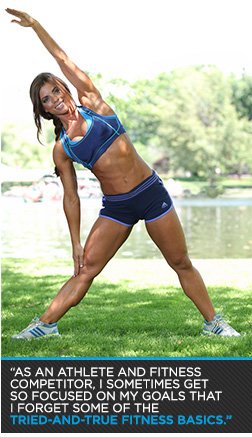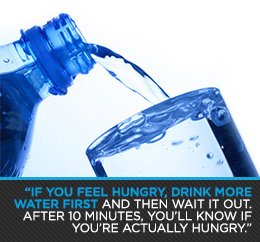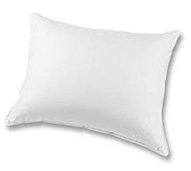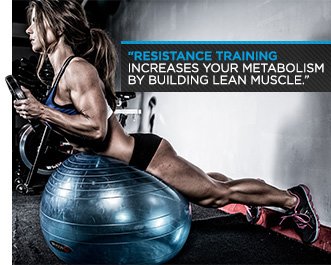Eating Fruit For Fat Loss

Shawn Phillips
A Bowl Full of Trouble?
What did the orange, say to the banana and the apple?
The Orange, “Squeeze me.”
The Banana, “Peel me open.”
The Apple: “Damn, you guys are needy!”
Sorry…I couldn’t resist. Now, to the question at hand:
Fruit… Is it a healthy treat or kryptonite for fat loss?
I see it almost every day on the social media wall of wisdom, “Just eat fruit.”
“I’m on a fruit diet.”
“I’m juice fasting!,” which, for me, translates, “I’m going to lose weight and get healthy drinking sugar.”
If you’ve ever pondered the role of fruit in weight loss and you like bananas, apples and think orange juice is magic elixir—this is a must read.
The Rules for Eating Fruit for Fat Loss
 1. The apple is king
1. The apple is king
As the ol’ saying goes, “an apple a day…” and I’m for anything that keeps doctors away.
While it’s not always my favorite fruit to reach for, it’s the one I’m always most grateful after I’ve eaten it. A fresh apple is crisp, delicious and make me feel better for whatever reason. And they come in the most interesting varieties.
I find apples more engaging and easier to enjoy when they are sliced. Certainly for kids.
The apple has a lot going for it. It’s higher in fiber and lower in the GI (Glycemic Index) charts—the importance of which I will explain in a moment.

2. Don’t juice it
The “sugar” in fruit is fructose—no, not the HFCS type but fructose none-the-less and fact is the human body doesn’t handle fructose much better than it handles mercury.
For some reason when the fructose is bound in the fibrous cells of the fruit, the body does much better with it. When it’s “juiced” it’s just fresh fructose juice—and there’s nothing good about that when it comes to losing fat.
Eat fruit, don’t drink it.
3. Eat fruit in moderation
I love fruit. It’s good, good stuff. It can be a great part of a healthy diet and yes, it’s possible to fruit your way fat.
I don’t know exactly how many bananas, grapes and mangoes it would take to become obese but simple fact is that fruit is carbs and too many carbs—even with potassium—can make you gain fat.
Go ahead, enjoy the banana. But put the second one down and back away slowly.
4. Eat by The Numbers
Ultimately, this is the bottom line key to dropping your top line (as in weight). Follow the index—as in Glycemic Index. The GI is a measure of how foods affect blood sugar and (thus) insulin. The higher the number (GI) the more the food impact blood sugar and the subsequent insulin rise.
And believe me, insulin is everything. In fat loss, performance, a long vital life.
Given elevated insulin can lead to fat gain, a lower GI for a lower insulin response is desirable. So a GI of 35 is a better choice than a food with a GI of 65. That’s simple enough, right?
Now, clearly “Glycemic Load” is more complete and thus accurate than GI alone, but the GI is still more widely known and used—and still very accurate. And good enough for this discussion.
In this battle of the fruits, the apple comes in with a GI of 39 (with some varieties dropping down to 32). The orange in second place with a mid-40’s average listing. And finally, the banana with a 49 up to 62 (for ripe banana).
I have to admit that the banana does come in much lower than I recall it. So, I find that good news. I like bananas and had accepted the idea that they were pretty fast acting sugars. And certainly a ripe banana may be but all in all, they come in pretty safe and sound for fat loss, so long as you don’t go bananas! (LOL)
Important Tip on Insulin and Fat Loss
As noted above, a lower Glycemic Index—equating to a lower insulin response—means more effective fat loss.
Okay. But why?
Insulin is the hormone that is responsible for shuttling energy for use in muscles or storage (fat). And when insulin is elevated, in response to higher carbohydrate / high-GI foods, there can be only storing and no fat utilization. High insulin shuts off all access to fat to be used as energy.
If you keep blood sugar level and low, and insulin which will follow, you’re body is in a preferred state of burning fat. And you maintain a more constant level of energy, free from energy swings and cravings.
Eating Fruit For Fat Loss Read More »






 If you only use apple cider vinegar on your salad, you’re seriously underestimating its potential. Raw, unfiltered apple cider vinegar (often abbreviated as ACV) can be used in so many ways that by the end of this article you may start keeping a bottle in every room of your house, not just the fridge! You can use apple cider vinegar for hair and skin care, household cleaning, healing and cooking.
If you only use apple cider vinegar on your salad, you’re seriously underestimating its potential. Raw, unfiltered apple cider vinegar (often abbreviated as ACV) can be used in so many ways that by the end of this article you may start keeping a bottle in every room of your house, not just the fridge! You can use apple cider vinegar for hair and skin care, household cleaning, healing and cooking.


